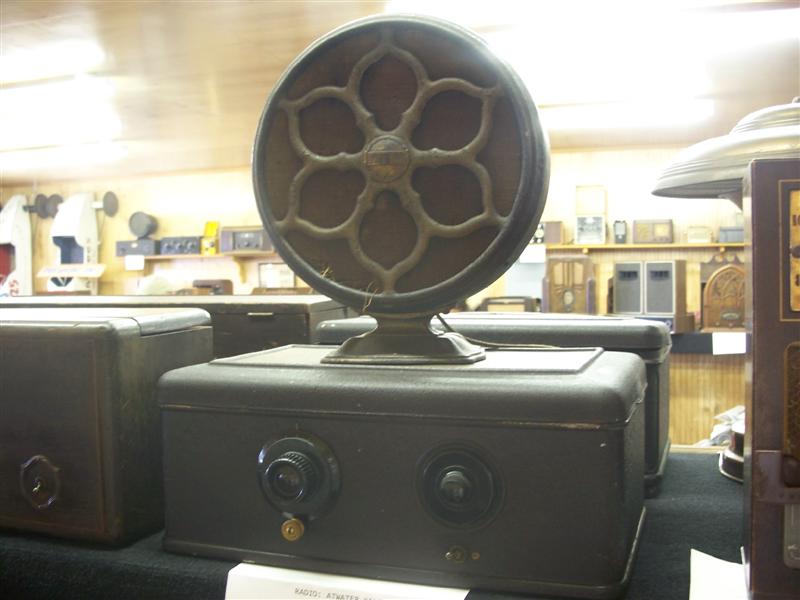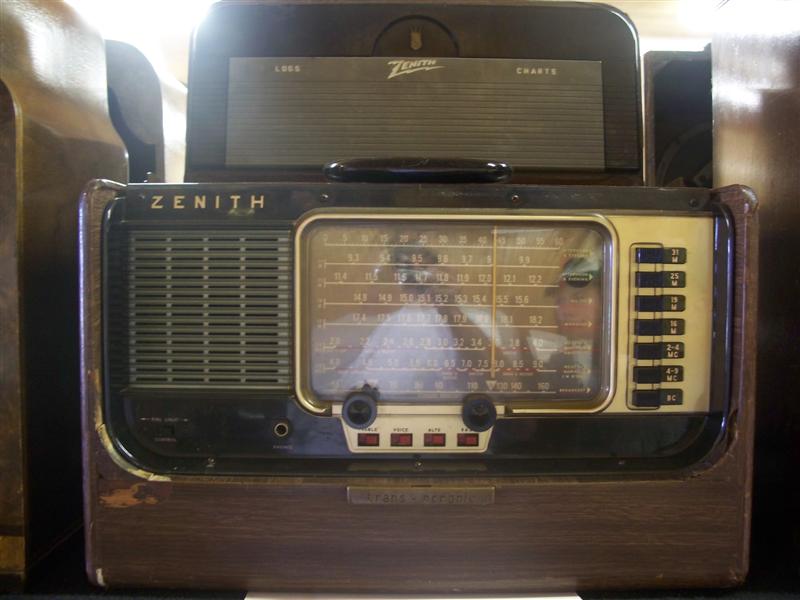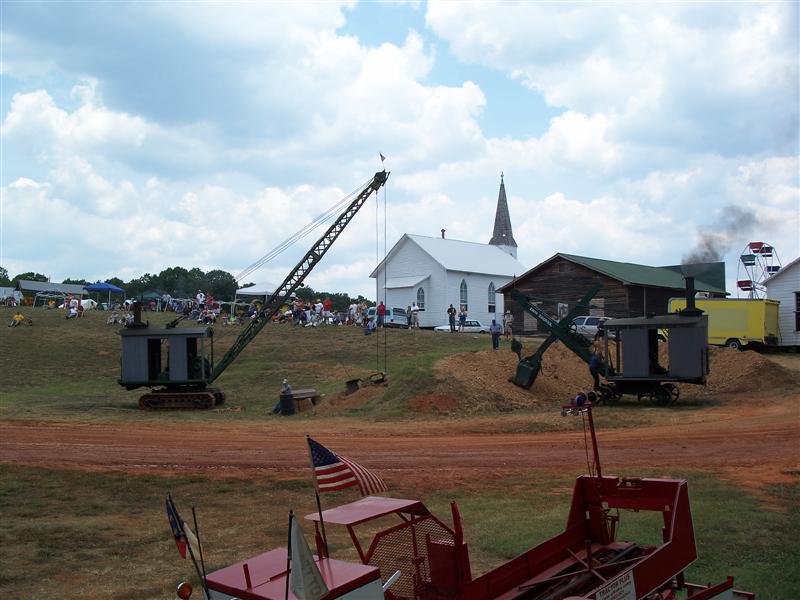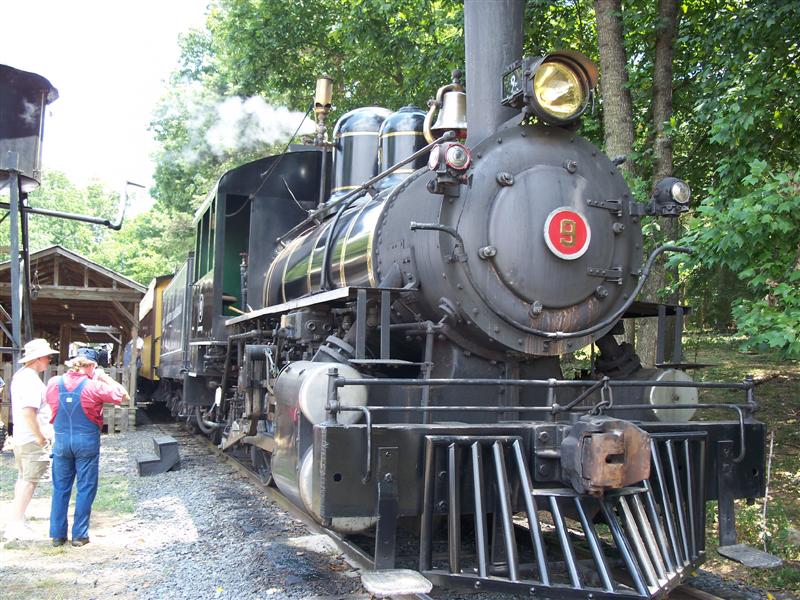I was amazed at how well my original “Retro Tech Days” post went over–enough so to be linked by both Tam and SurvivalBlog. I’m grateful to both for the big boost in readership. I have a lot more pictures, along with some video, so I thought I’d toss it up here for your browsing pleasure and see if lightning strikes twice.

Let’s start off with tractors, since this is the Southeast Old Threshers Reunion. First up is this large steam-powered Case tractor. Note the large flywheel, which would have been used (along with a large leather belt) to power other farm equipment, such as a thresher or perhaps a small sawmill. Back in the day, a tractor like this would be a huge capital investment for a farmer, and it had to be able to perform many functions. Contrast that to today, where many pieces of farm equipment perform only a single task or series of related tasks (such as the combine).
Here we have the Grand Dame of the Denton Farmpark, the Altman-Taylor, as it prepares to lead the final day’s “Parade of Power”. It also has the big flywheel for powering other equipment. Obviously this machine was designed in the days before OHSA.
While it’s difficult to see, this tractor is steered by chains, rather than a four bar system as you might expect. The chains seem to wrap around a geared shaft which is turned by the steering wheel. If you watch carefully at the beginning of the clip, you’ll see the driver cranking on that wheel, and you can see how much mechanical advantage it took to allow this beast to be steered by those with mere mortal levels of upper body strength.

Now, let’s venture back to the radio museum for a bit. (Besides, it’s air conditioned!) Most of the items in this building belong to Stan Bingham, a local state senator. 
Here we have an Atwater-Kent from the early days of commercial radio. Doing a bit of research, this one seems to be a Model 42 with a Model E speaker. The Model 42 was AC-powered, which was an advance from many older radios which were battery-powered. Because it required AC power, I suspect it was marketed to more well-to-do customers who lived in an urban setting. (In 1929, rural electrification was still a thing of the future, and many if not most farms depended on power sources other than our familier wall sockets. If you wanted a radio, it had to run off batteries, which were exchanged (along with some of you cash) at a local store for fresh ones. No throw away batteries in those days!)

Here we have a newer Zenith model A600L of the famed Trans-Oceanic series. Manufactured in 1958, it was nearly the end of the line for Zenith vacuum tube radios, and was priced at $139.95–that’s the equivilent to $1,034.84 in current dollars. (Isn’t inflation wonderful?) I had a cousin who had a later transistor-based Trans-Oceanic. I lusted after one of those for years.
Moving along, let’s have another look at tractors–the hay-burning variety. Again, this team is pulling 4000 pounds on a sled. I was amazed at these animals and how badly the seemed to want to pull that sled. At the sound of the hook hitting the eye, many of the teams would simply take off–the guys doing the hooking knew this and moved quickly. Hang onto the reins, boys!
The astute viewer will notice a large gray device in the background. It’s the steam shovel, better seen in this picture, along with its fellow, the steam crane. Relatives of these two helped build the Panama Canal.
Relatives of these two helped build the Panama Canal.
Behind the steam equipment is the Jackson Hill Church, a place with its own quiet appeal. Service is still held there every Sunday morning.
The Farmpark also has it’s own railroad–The Handy Dandy RR. They have two engines, with my favorite being…the steam engine! (What, you’re surprised?)
 This engine was built for use as a “switcher” during World War II, and like so many of the exhibits, was rescued and brought to Denton, where it was repaired, refurbished and continues to belch smoke, ring its bell and delight thousands every year.
This engine was built for use as a “switcher” during World War II, and like so many of the exhibits, was rescued and brought to Denton, where it was repaired, refurbished and continues to belch smoke, ring its bell and delight thousands every year.
This is how our grandparents, great grandparents and great-great grandparents lived in small towns scattered across the United States. They lived simply, with none of the conveniences we take for granted. High tech for them was a radio, and the future was a magic wire that delivered electricity to light their home. Using tools like these they built the greatest country in history, and events like this celebrate that heritage. You really should find one to go to.


